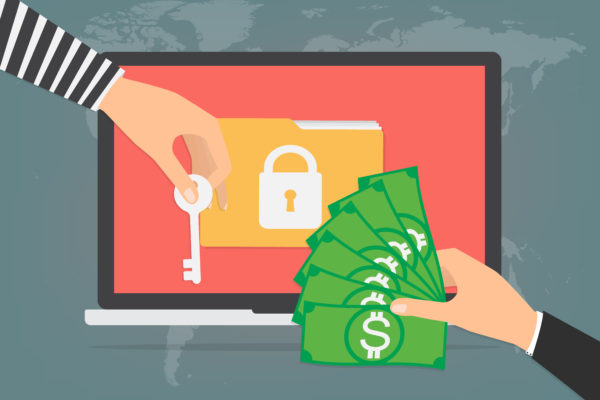Ransomware is increasingly becoming the weapon of choice for cybercriminals because of the lucrative returns that it promises, the relative ease with which it’s generated and then spread out and also because it’s relatively hard to defend against. The most recent attack known as the WannaCry ransomware, happened in May 2017 and reportedly impacted 300,000 computers around the world with losses estimated to be around $4 billion.
What is ransomware?
As the name suggests, it is the concept of holding your data hostage and demanding ransom for it. Ransomwares attackers usually demand payments in cryptocurrencies making it an extremely lucrative activity giving the skyrocketing prices of these digital currencies.
There are various different types of ransomwares and new iterations are released regularly around the globe. All these developments happen so fast that it is sometimes hard to keep track of them. Here we list four of the most prominent ransomware detected till date.
WannaCry
Taking advantage of a Microsoft Windows vulnerability, the largest and most recent ransomware attack on the planet was able to impact healthcare, government and private institutions around the world. Although most attacks were reported from Russia and Taiwan, US logistics firm FedEx said it was also affected. Furthermore, the National Health Service reported that 16 organizations that are a part of its network were impacted causing some surgeries to be cancelled and other daily operations suspended.
Locky
Locky is another ransomware that is spread using Microsoft Word. The victims download a file sent via spam emails and the attached document requires them to enable the macros function in Word in order to view the contents. Once this is done the virus works by encrypting and deleting files stored locally as backups if a ransom is not paid by the specified deadline.
CryptoLocker
This ransomware has been accredited with introducing the recent wave of attacks that encrypt user files using a separate key for each one on order to make the victim pay for each file they need unlocked. It hit the scenes in 2013 and was responsible for causing almost $3 million in losses before it was shutdown. However, hackers have copied the mechanism of this ransomware to build different versions of the virus.
Cryptowall
Distributed with spam emails and exploit kits, Cryptowall gained popularity in 2014 after the infamous Cryptolocker attack in the preceding year. Since there have been a wide variety of versions of Cryptowall with the most recent; Cryptowall 4.0 released in 2015. The virus even encrypts filenames making it impossible for victims to know which data has been encrypted and where. The ransom demanded by the hackers is an eye-watering $700 that is doubled if the victim misses the first deadline.
Ransomwares are becoming famous for a variety of reasons. They are relatively easy to create and operate and extremely hard to defend against. Once in the system they work in a rather innovative way in order to coerce you into paying hefty amounts to recover your sensitive information. It is important to be wary of the growing threat posed by these viruses and take steps to defend against them.
For assistance with file recovery and ransomware removal, please contact MonsterCloud – cyber security experts for a professional ransomware removal.



